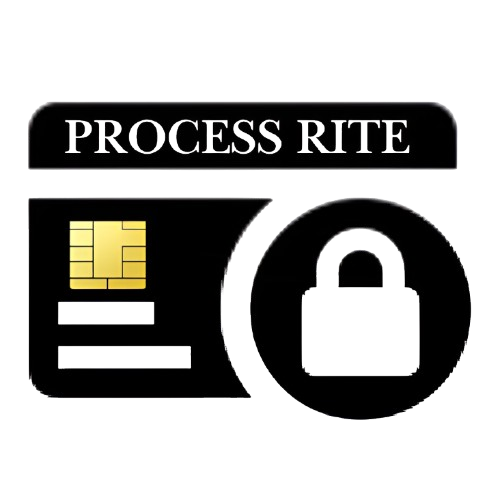What Is a Cash Register? A cash register is a traditional business tool used to record sales, store money, and print receipts. It has been around for over a century and continues to serve as a simple, reliable method for processing customer transactions. These machines are typically mechanical or electronic, with built-in drawers, a basic display screen, and receipt printers. Though limited in capabilities compared to modern tools, a cash register still serves its purpose well in smaller or cash-heavy businesses like local bakeries, food trucks, or flea market stalls. Key Functions of a Cash Register What Is a POS System? A POS (Point of Sale) system is a combination of hardware and software that does more than just process transactions. It acts like a digital command center for modern businesses, especially in retail, restaurants, and service industries. From sales tracking to inventory management and customer relationship tools, POS systems have become an all-in-one solution for business owners seeking efficiency, accuracy, and better customer experiences. Common POS System Components Core Differences Between Cash Register and POS System Feature Cash Register POS System Transaction Handling Basic sales only Advanced (cash, card, mobile, etc.) Inventory Management Manual tracking Real-time inventory updates Reporting Basic daily reports Detailed analytics and dashboards Software Integration None Integrates with accounting, CRM, payroll, etc. Mobility Stationary Can be mobile or cloud-based Cost Lower upfront cost Higher initial cost but more ROI User Interface and Ease of Use Cash registers are typically simple machines with limited buttons or basic touchscreens. They require minimal training but offer limited functionality. In contrast, POS systems are designed with intuitive interfaces, often similar to smartphones or tablets, making them easier to learn but offering deeper features. Modern POS systems are especially user-friendly for employees with basic tech familiarity. Transaction Speed and Accuracy Speed and accuracy are everything in a busy retail or restaurant setting. Cash registers rely on manual entry, which can increase errors. POS systems automate much of the process—scanning barcodes, applying discounts, and calculating tax precisely—reducing human error and speeding up transactions. Integration with Other Business Tools POS systems shine when it comes to integrations. Whether it’s syncing with QuickBooks, Shopify, Square, or inventory software, POS systems simplify the business back end. On the other hand, cash registers stand alone, requiring manual data entry for any external tracking or analysis. Cost Comparison: Upfront vs Long-Term Investment While POS systems come with a higher price tag, they offer a better long-term return thanks to automation, reduced errors, and improved operational control. Security and Fraud Prevention POS systems offer built-in fraud detection tools, such as staff login tracking, refund restrictions, and encrypted payments. Some even include CCTV integrations. Cash registers, however, rely on physical controls and often lack digital accountability. Inventory Management and Stock Control Manual inventory control via a cash register can become chaotic quickly. POS systems automatically adjust stock levels with every sale, alert you when items are low, and even predict reorders based on buying patterns. This leads to: Reporting and Data Insights POS systems provide advanced, real-time reports on: Cash registers typically provide basic X and Z reports—good for daily totals but not much else. Scalability and Multi-Store Operations Running multiple stores or locations? POS systems allow for centralized reporting and management from one dashboard. Cash registers require manual data consolidation, making multi-store oversight difficult and time-consuming. Customer Relationship Management (CRM) POS systems can store customer profiles, track purchases, and integrate with email marketing platforms. This means you can reward loyal customers and personalize promotions. Cash registers can’t offer this level of engagement. Mobility and Cloud Access Cloud-based POS systems let you check sales from your phone, monitor staff activity remotely, and make updates without being on-site. Cash registers, meanwhile, are fixed-location tools with no internet connectivity or remote features. Payment Processing Capabilities POS systems support a wide range of payments: Cash registers are limited to cash and manual card entry, lacking the flexibility today’s shoppers expect. Compliance and Tax Automation POS systems can automate tax calculations, apply location-based rules, and help with sales tax compliance. They can also generate end-of-year summaries for accountants. Cash registers may help with tax totals, but they lack automation and often lead to manual errors. Which Is Right for Your Business? Business Type Best Option Small, cash-based shop Cash Register Retail store with high inventory turnover POS System Multi-location restaurant POS System Pop-up or temporary stall Cash Register or mobile POS Online + In-store hybrid POS System FAQs 1. Can I upgrade from a cash register to a POS system later? Yes, many businesses start with a cash register and move to a POS system as they grow. The switch is relatively easy with the right provider. 2. Is a POS system worth the higher cost? For most growing businesses, absolutely. The efficiency, data insights, and flexibility often lead to higher profits and better customer satisfaction. 3. Can a POS system work offline? Yes. Most cloud-based POS systems have an offline mode that stores transactions locally and syncs them once the internet is back. 4. Are there free POS systems? There are basic free options like Square POS, but they may charge transaction fees or lack advanced features. 5. Do cash registers accept credit cards? Some models support external card readers, but integration is limited and not as seamless as POS systems. 6. What’s the best POS system for small businesses? Popular options include Square, Clover, Toast (for restaurants), and Lightspeed. Each has unique strengths depending on your industry. Conclusion In today’s business environment, staying competitive requires more than just ringing up sales. While cash registers still serve a purpose for small, cash-based businesses, POS systems provide a full ecosystem to run, grow, and analyze your operations. If you’re serious about expanding or improving your workflow, making the shift to a POS system could be one of your smartest investments.

